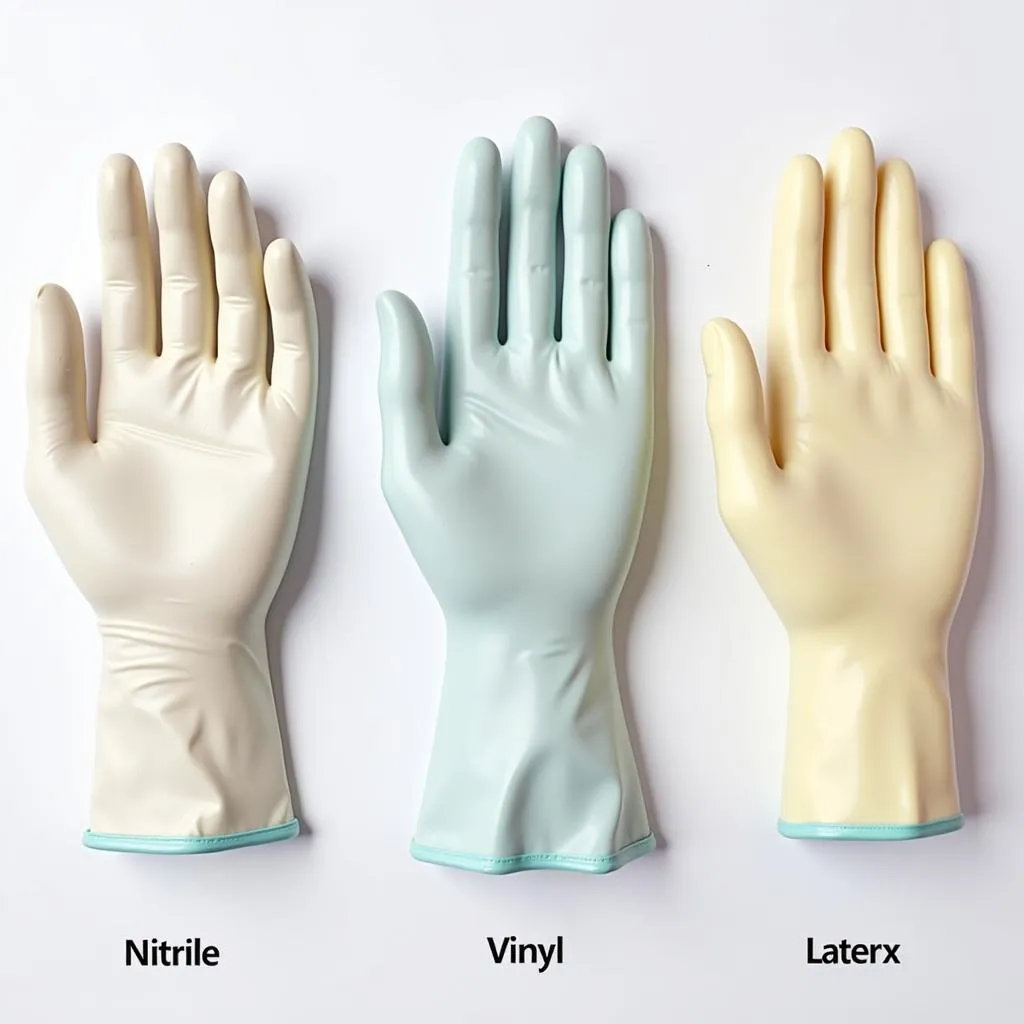Food Handling Disposable Gloves. You see them everywhere in professional kitchens and increasingly in home kitchens too. But are they really necessary? What are the benefits? And how do you choose the right type for the job?
This comprehensive guide answers all your burning questions about food handling disposable gloves, empowering you to handle food safely and hygienically.
Why Use Food Handling Disposable Gloves?
 Food handlers wearing gloves
Food handlers wearing gloves
Imagine this: you’re meticulously preparing a delicious meal for your loved ones. You’ve washed your hands thoroughly, but you can’t shake the feeling of bacteria lurking on your fingertips. That’s where food handling disposable gloves come to the rescue!
Here’s why they’re essential for maintaining optimal hygiene:
- Prevent Cross-Contamination: Gloves act as a barrier, preventing the transfer of bacteria and viruses from your hands to food. This is especially critical when handling raw meat, poultry, and seafood, which are known to harbor harmful microorganisms.
- Reduce the Spread of Germs: Even with frequent handwashing, our hands can still carry germs. Wearing gloves minimizes the risk of spreading germs to surfaces, utensils, and ultimately, to the food we eat.
- Maintain Food Freshness: Our hands naturally produce oils and sweat, which can affect the flavor and freshness of food. Gloves create a neutral barrier, preserving the integrity of delicate ingredients and ensuring the best possible taste.
- Protect Your Skin: Frequent handwashing, while crucial for hygiene, can dry out and irritate your skin. Gloves protect your hands from harsh cleaning chemicals and hot water, keeping them soft and healthy.
Choosing the Right Food Handling Disposable Gloves
Navigating the world of disposable gloves can be overwhelming with the variety of materials and styles available. Fear not! Here’s a breakdown of the most common types and their best uses:
1. Nitrile Gloves
Nitrile gloves are made from a synthetic rubber and are known for their exceptional durability, puncture resistance, and chemical resistance. They’re the gold standard for handling greasy foods, like fried chicken or potato chips, and tasks that require a strong grip.
Best For:
- Handling raw meat, poultry, and seafood
- Working with oily or greasy foods
- Tasks requiring a strong grip
- People with latex allergies
2. Vinyl Gloves
Vinyl gloves are an economical choice, offering a comfortable fit and basic protection against light contamination. They’re ideal for tasks that don’t involve harsh chemicals or excessive force.
Best For:
- Food prep tasks like washing fruits and vegetables
- Serving ready-to-eat foods
- Short-duration tasks
3. Latex Gloves
Latex gloves are prized for their flexibility, dexterity, and sensitivity, making them ideal for tasks requiring intricate handling. However, it’s crucial to be aware of potential latex allergies.
Best For:
- Delicate food preparation tasks
- Handling small or fragile items
- Environments where tactile sensitivity is crucial
 Different types of food handling gloves
Different types of food handling gloves
FAQs – Food Handling Disposable Gloves
Are food handling disposable gloves really necessary at home?
While not mandatory in home kitchens, they’re highly recommended, especially when handling raw meats, seafood, or if you’re preparing food for someone with a weakened immune system.
Can I wash and reuse disposable gloves?
No. Disposable gloves are designed for single use only. Washing them compromises their integrity and increases the risk of contamination.
How often should I change my gloves during food preparation?
It’s best to change gloves every time you switch tasks, especially after handling raw meat or poultry, to prevent cross-contamination. Also, change gloves if they become torn or soiled.
Expert Insights
“Investing in high-quality, food-safe disposable gloves is non-negotiable for any food service operation,” says Chef Emily Carter, a certified food safety instructor with over 15 years of experience. “It’s about protecting your customers’ health and the reputation of your establishment.”
Dr. Sarah Jones, a leading food safety researcher, emphasizes, “Proper glove use goes beyond just wearing them. It’s crucial to ensure a proper fit, change them frequently, and practice meticulous hand hygiene even when wearing gloves.”
Conclusion
Food handling disposable gloves are an indispensable tool for anyone who handles food, whether you’re a seasoned chef or a home cook. By understanding the different types of gloves and their applications, you can make informed choices to elevate your food safety practices.
Remember, maintaining optimal hygiene is an ongoing commitment, and using disposable gloves is a simple yet powerful step towards ensuring that every meal you prepare is safe, delicious, and worry-free.
For all your food handling disposable glove needs and expert advice on food safety practices, contact Mina Cones Food today! Call us at 02437655121, email us at [email protected], or visit us at 3PGH+8R9, ĐT70A, thôn Trung, Bắc Từ Liêm, Hà Nội, Việt Nam. Our dedicated team is available 24/7 to assist you.